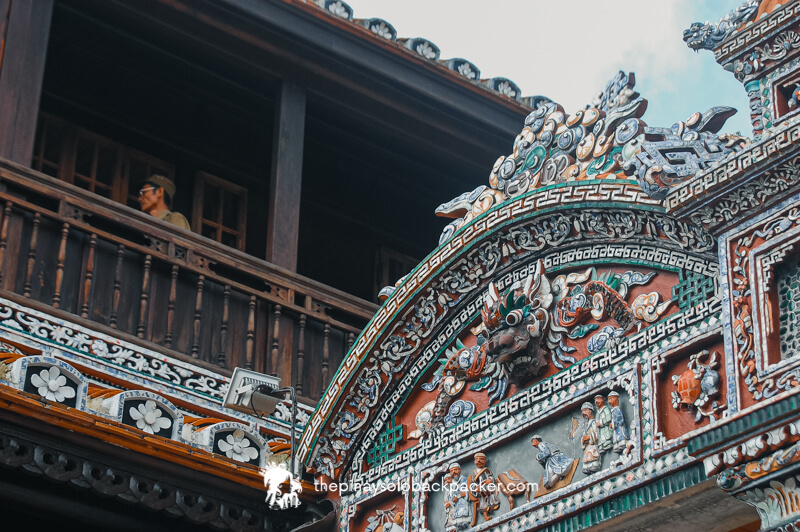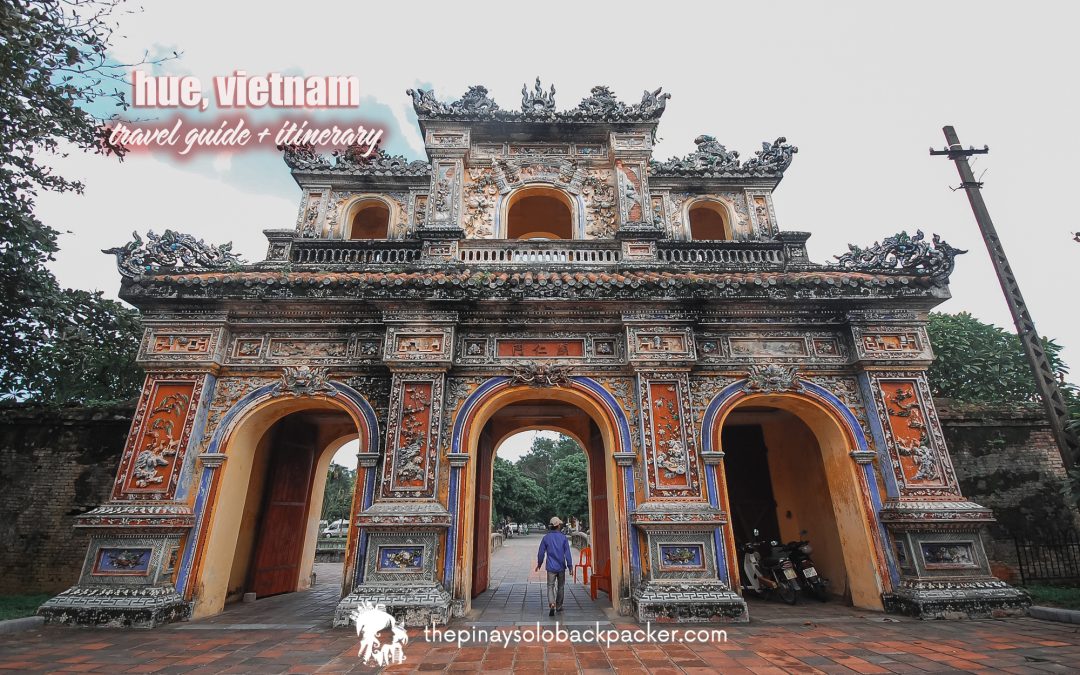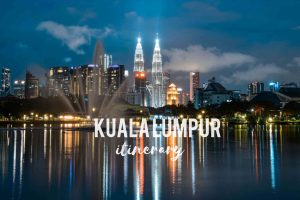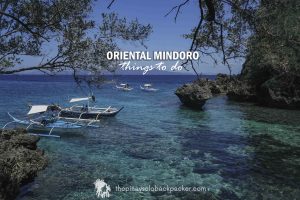The past is everywhere in Hue, the ancient imperial capital of Vietnam. Everywhere you go, there’s something unforgettable to admire. From the extensive Hue Citadel and Imperial City, to the splendid Royal Tombs. Hue’s wealthy history is evident in a wealth of historic structures sprinkled around the city, that’s why is it is no surprise why it was designated as a UNESCO World Heritage Site.
Nevertheless, Hue is not all about ancient history, you can also take advantage of the island’s intense natural beauty – from hidden stunning caves to postcard perfect national parks. Each has its own unique appeal, and many of them are quietly hidden away within the serene course of the Perfume River.
To help you prepare for your trip to Hue, here’s my DIY Hue Travel Guide with sample Hue Itinerary and Expenses.
TRAVEL BLOG CONTENTS
ABOUT HUE

Achingly beautiful, Hue has a bittersweet history that shaped its present. Thankfully, many of its worsts events eventually led to better situations that made Hue more resilient.
Hue sits along the Perfume River in Central Vietnam, clad by green rice fields and surrounded by forest-clad massif, including the Truong Son Mountains. It rose to fame during the Nguyen Empire, when it became the imperial capital of the unified Vietnam.
Based on anecdotes, Hue used to be part of the O and Ly prefectures of the Cham Kingdom, until it was given as a gift by Che Man, the Cham King to the Vietnamese King, during his marriage to a Vietnamese Princess named Huyen Tran of the Tran Empire sometime in 1306. O and Ly was later on renamed to Thuan Hoa.
When Mac Dynasty escaped to Laos, the Le Emperors under the rule of Nguyen Kim were enthroned as Vietnamese rulers. But Nguyen Kim was poisoned by a Mac Dynasty general, and his son-in-law Trinh Kiem who is married his daughter Ngoc Bao, took over the leadership. Nguyen Uong, Kim’s eldest son was also assassinated, to secure the reign of Trinh Kiem. Fearing for his life, Nguyen Kim’s other son Nguyen Hoang, feigned his mental illness, and asked her sister Ngoc Bao, to convince her husband Trinh Kiem to transfer him to Thuan Hoa, the farthest region in Southern Vietnam that time. Trinh Kiem eventually obliged due to the war in Thuan Hoa, little did he know that Nguyen Hoang will become the founder of the Nguyen Dynasty and eventually rule Southern Vietnam and refused to pay tribute to Northern Vietnam, which is under the rule of Trinh Dynasty.
After several years of war between the North Vietnam (Trinh Dynasty) and the South Vietnam (Nguyen Dynasty), in 1802, Vietnam was finally unified by Gia Long, born Nguyen Phuc Anh. Hue became the capital of Vietnam under the rule of the 13 Nguyen Kings. During the Nguyen Dynasty, construction of the Hue citadel was started near the Perfume River (Huong River), composed of palaces, temples, gardens, and pavilions. At the heart of the Hue Citadel is the Purple Forbidden City where the emperor and his advisers reside and work.

If you’re wondering how the French was able to gain influence in Vietnam, it was because of Gia Long’s friendship with the French priest – Pigneau de Behaine, who became his advisor and helped many times in recruiting armies during the war against the Tay Son.
Unfortunately, much of the buildings inside the confines of the Hue Citadel were heavily destroyed during the uprising against the French rule, and later on during the Battle of Hue. Out of the 160 buildings here, only about 10 stood the test of time. The said buildings were restored and preserved and are now open to the public. Aside from Hue Citadel, during the Nguyen Dynasty, several ostentatious Royal Tombs were also built in the city. Fortunately, these tombs were beautifully-preserved and can now be explored when traveling to Hue.
HUE TRAVEL GUIDE
BEST TIME TO VISIT HUE,VIETNAM

Hue is beautiful, but has erratic weather. So when planning your trip, always check the weather updates.
Hue has 4 seasons: spring, summer, autumn, and windy winter.
The rainy season in Hue is from September to February, avoid traveling to Hue from September to December due to heavy rains. Meanwhile, the summer season, which is the peak season, is from March to August.
If you want to avoid the heavy rains (as Hue is known to receive the highest rainfall in Vietnam), visit during July to August, when the weather is chilly and pleasant.
HUE MONEY/EXCHANGE
Vietnamese Dong is the currency used in Hue. But some tourist establishments such as hotels, restaurants, etc. may accept US Dollars. The best rate is still the bank rates. I usually just withdraw from ATMS scattered around the city.

HUE ELECTRICITY
Like the rest of Vietnam, Hue’s electricity voltage is 220V at 50 Hz. Check your gadget if it says “100-240V and 50-60 Hz”, if not, then you need a transformer to convert to 220V.
The typical electrical socket in Hue is type A, type C, and type F.
HUE WI-FI
Stay connected in Hue and the rest of Vietnam by carrying a portable Wi-Fi. You can book in advance below.
Philippines (Manila Delivery): BOOK HERE
Philippines (Airport Pick Up): BOOK HERE
Malaysia (Airport Pick Up): RESERVE HERE
Singapore: RESERVE HERE
If you are traveling alone and you just need a cheap Wi-Fi connection, you can purchase a Sim Card and connect online using available data. Buy a Vietnamese sim card in advance below.
Vietnam Sim (Vietnam Airport Pick Up): BUY HERE
WHERE TO STAY IN HUE, VIETNAM

Hue’s backpacker district is situated between Le Loi and Le Qui Don streets in Hue’s city center. It is a convenient and inexpensive place to stay in Hue as it is only about 15-minute walk from Hue Imperial City. So if you are looking for budget hotels in Hue, this is the place to be as it is peppered with affordable rooms and is pretty much close to restaurants, shops, and convenience stores. But so long as your hotel is located in Hue’s city center, you should be okay, as getting around is quite easy in Hue due to many transportation options. Also, most tour packages include a hotel pick-up and drop-off.
Here’s some of the top-rated budget hotels in Hue, according to online users.
Than Thien Friendly Hotel
Location: Nguyen Cong Tru
The Sun River Boutique Hotel
Location: Doi Cung
Hue Four Seasons Hotel
Location: Nguyen Cong Tru
Nice Hue Hotel
Location: Hai Ba Trung
Amona Hotel
Location:Nguyen Cong Tru
Hong Thien1 Hotel
Location: Nguyen Cong Tru
HOW TO GET TO HUE
Hanoi to Hue
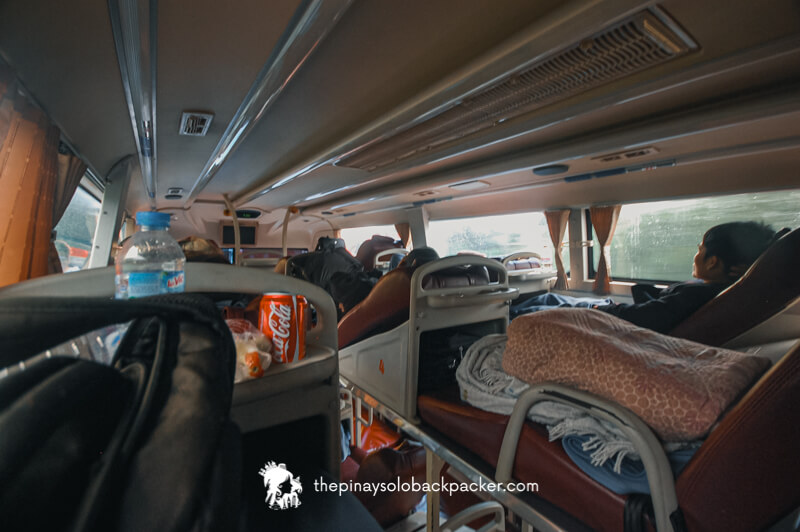
Option 1 (Bus or Train)
From Hanoi, you can opt to take a bus or train to Hue. The train transit time takes approximately 13-14 hours and fare starts at VND 566,000 – ₱1,240. Bus is a more popular option as it is cheaper (bus fare starts VND 418,000 – ₱916) at and travel time about 12 hours. You can buy tickets and check the train and bus schedule through the link below.
Hanoi to Hue (bus and train) : RESERVE HERE
Option 2 (By Air)
From Hanoi Nobai Aiorport, you can fly to Phu Bai Airport in Hue. Travel time is roughly 1 hour and 15 minutes.
Hanoi to Hue (airplane) : RESERVE HERE
Ho Chi Minh City to Hue
Option 1 (Bus or train)
From Ho Chi Minh City (Saigon), you can take a bus or train to Hue. The train travel will take roughly 15 hours and fare starts at VND 660,000 – ₱1,445. Bus is a more popular option as it is cheaper (bus fare starts VND 517,000 – ₱1,030) at and travel time about 19 – 20 hours. You can buy tickets and check the train and bus schedule through the link below.
Ho Chi Minh City to Hue (bus and train) : RESERVE HERE
Option 2 (Airplane)
From Ho Chi Minh City Airport, you can fly to Phu Bai Airport in Hue. Travel time is roughly 1 hour and 25 minutes.
Ho Chi Minh City to Hue (airplane) : RESERVE HERE

Da Nang to Hue
If you want to make a side trip to Da Nang, you can fly from Hanoi or Ho Chi Minh City to Da Nang and ride a bus or train to Hue, see the Da Nang to Hue section below.
Option 1
There are non-stop and direct flights from Singapore (1 hour and 40 mins) and Malaysia (2 hours and 40 mins) to Da Nang International Airport. Da Nang is about a 2 hour drive from Hue, you can ride a bus or take a train for roughly 3 hours. The airfare is quite inexpensive through budget airlines.
Singapore to Da Nang: BOOK HERE
Kuala Lumpur, Malaysia to Da Nang: BOOK HERE
Da Nang to Da Nang City Center – Approximately 15 minutes
Da Nang to Hue – Approximately 2 hours
Da Nang to Hoi An – Approximately 45 minutes
Option 2
If you are coming from Ho Chi Minh City or Hanoi, you can also fly to Da Nang, the airfare is quite affordable. That is, if you want to stay and visit Da Nang first, but if not, just fly directly to Hue, as there’s not much difference in airfare and you’ll save time as it takes about 3 hours by bus or train to Hue from Da Nang.
1.From Hanoi or Ho Chi Minh City, you can fly to Da Nang. You can book below.
Hanoi to Da Nang: RESERVE HERE
Ho Chi Minh to Da Nang: RESERVE HERE
2.At Da Nang, you can take a bus, train, or taxi to Hue, travel time is about 3 hours. Book in advance below to secure a seat.
Da Nang to Hue: RESERVE HERE
GETTING AROUND HUE
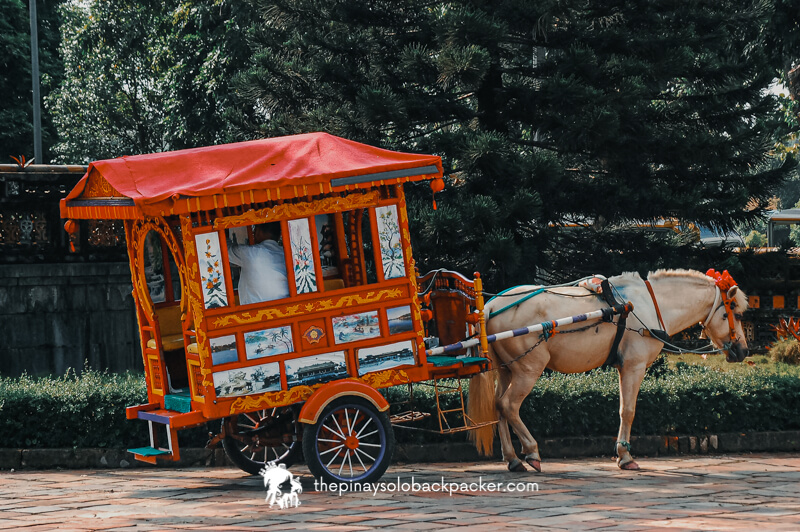
By Cyclo Tour
An interesting way to explore Hue is by cyclo. You can book a cyclo tour to get around Hue’s historical center. The tour typically includes a quick visit to Trang Tien Bridge, Dong Ba Market, Chanh Dong Old Gate, the Hue Museum of Royal Antiquities, and the Moon Gate.
Hue Cyclo Tour: RESERVE HERE
By Car Rental
If you are traveling in group, your best bet is to hire a car (with driver) and share the cost. You can follow my Hue itinerary below. To book with a reputable car rental company in Hue, click the link below.
Hue Car Rental: BOOK HERE
By Tour Package
For hassle-free tour of Hue, you can join Hue group tours. They’re pretty affordable and typically includes the entrance fees to the major Royal Tombs and lunch or snack.
Hue City Tour: RESERVE HERE
Phong Nha Cave Exploration: RESERVE HERE
Than Thoan Village Tour: RESERVE HERE
Bach Ma National Park Tour: RESERVE HERE
THINGS TO DO IN HUE, VIETNAM

Hue’s top attractions include the Royal Tombs of former Emperors, and if you plan to visit the major ones, you can actually buy a combo (combination) ticket and you can use it for 2 days to save you a few bucks.
Combo 3 ticket (Hue Imperial City, Tomb of Emperor Minh Mang, Tomb of Khai Dinh)
(adult) VND 420,000
(child) VND 80,000
All tickets (Hue Imperial City, Tomb of Emperor Minh Mang, Tomb of Khai Dinh, Tomb of Emperor Gia Long, Tomb of Emperor Thiệu Trị, Tomb of Dong Khanh, An Dinh Palace, Nam Giao Esplanade, Hon Chen Temple)
(adult) VND 500,000
(child) VND 110,000
If you only have 2-3 days to spend in Hue, here are some of the top tourist spots in Hue that you can visit.
1.HUE CITADEL
Entrance Fee: (adult) 200,000 VND – ₱438 (SGD 12, MYR 36, AUD 13, USD 9)
(children, 7-12 y.o) 40,000 VND
Parking Fee: 4,000 VND – ₱9 (SGD 0.24, MYR 0.72, AUD 0.26, USD 0.17)
Open Hours: Daily 7:00 AM – 5:30 PM

Proudly standing at the heart of Hue is the heavily buttressed Hue Citadel, facing the Perfume River (Huong River) built by Gia Long, who was born as Nguyen Phuc Ang. This former imperial capital of Vietnam under the Nguyen Empire is sprawling, and you would need about half day to fully explore it. It is home to Hue Imperial City, Thai Hoa Palace, Trieu Mieu Temple, Royal Treasury, Royal Theater, Purple Forbidden City, and sprinkled with temples, pavilions, and gardens.
2.THIEN MU PAGODA
Entrance Fee: FREE
Parking Fee: 2,000 VND – ₱4.40 (SGD 0.12, MYR 0.36, AUD 0.13, USD 0.086)
Open Hours: Daily 7:30AM – 5:30 PM

Thien Mu Pagoda is Hue’s oldest Pagoda, founded sometime in 1601 through the order of Nguyen Hoang, the Governor of the Thuan Hoa province. It is also known as the Pagoda of the Heavenly Lady, sitting on top of the Ha Khe hill facing the Huong River (Perfume River). Story has it that when the Governor found this area when he surveyed Hue for place to build his residence, the locals then told him about a tale of an old lady who appeared here saying a true Lord will arrive and build a pagoda there for the prosperity of the country.
The Thien Mu Pagoda was restructured on a larger scale during the reign of Lord Nguyen Phuc Chu, around 1691 to 1725. Then the big bell with inscribed teachings was built in 1710. Three years later, additional structures were built in the area, only a few of them are standing to date. There’s also a school and rooms for the monks within the area, so you’ll most likely encounter a monk during your visit.
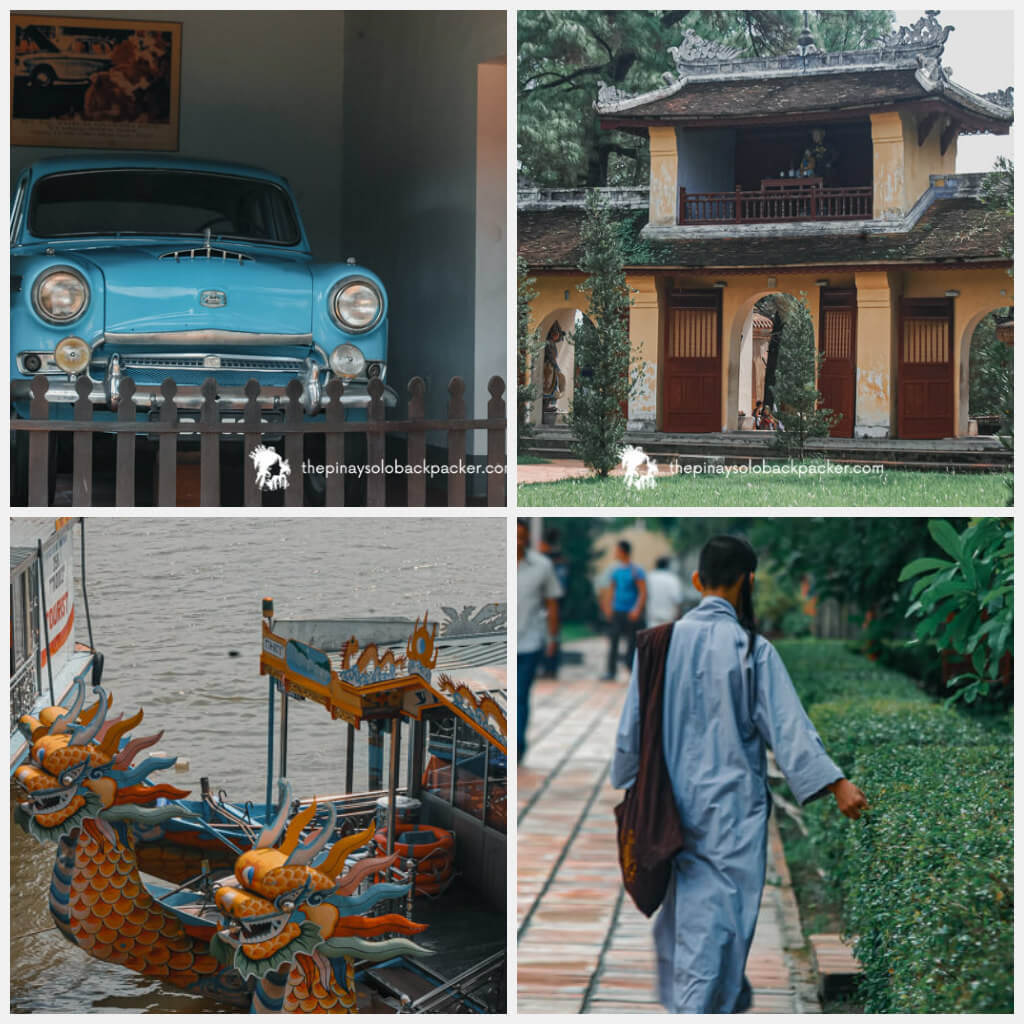
The Phuoc Duyen Tower is the first structure that you’ll come across here. It is a 7-tiered tower soaring at 21 meters high with a Buddha statue on each level.
But what really caught my attention here is a pale blue Austin car on display at Thien Mu Pagoda. The sign indicates that this was the car used by Thieh Quang Duc, a monk from Thien Mu who drove from his temple in Saigon in 1963, and got off somewhere in Hue and then sat in the cross-legged lotus position and set himself on fire as protest against the anti-Buddhist government that time.
You can also reach the Thien Mu Pagoda from downtown Hue by riding the dragon boat for tourists that sail through the Perfume River.
3.TOMB OF TU DUC
Entrance Fee: (adult) 150,000 VND – ₱329 (SGD 9, MYR 27, AUD 10, USD 6)
(child, 7-12 y.o) 30,000 VND – ₱66 (SGD 2, MYR 5, AUD 2, USD 1.29)
Parking Fee: 3,000 VND – ₱7 (SGD 0.18, MYR 0.54, AUD 0.20, USD 0.13)
Open Hours: Daily 7:30AM – 5:30 PM
Said to be the most impressive of all royal tombs in Hue, the Tomb of Tu Duc is where the longest reigning emperor of the Nguyen Dynasty, who served for 35 years is supposed to be buried. He ordered to construct a sprawling tomb that served as his residence. Tu Duc has many wives, but no biological son, only an adopted son. It features man-made landscapes, manicured garden fringed with pine trees, a pavilion on a lotus pond, and sprinkled with palace buildings and temples. It is said that the construction involved forced labors and resulted in coup that was discovered and halted. It is believed that Emperor Tu Duc preferred living here due to the scenic atmosphere, which is perfect for his poetry.
Interestingly, Tu Duc was never buried here. Based on anecdotes, no one knows where he was buried as upon his death to prevent it from being targeted by grave robbers. The 200 servants who buried the Emperor with his treasures where all beheaded after the burial.
4.ROYAL TOMB OF KHAI DINH
Entrance Fee: (adult) 150,000 VND – ₱329 (SGD 9, MYR 27, AUD 10, USD 6)
(child, 7-12 y.o) 30,000 VND – ₱66 (SGD 2, MYR 5, AUD 2, USD 1.29)
Parking Fee: 5,000 VND – ₱11 (SGD 0.30, MYR 0.90, AUD 0.33, USD 0.22)
Open Hours: Daily 7:00AM – 5:30 PM

Emperor Khai Dinh is the 12th King of the Nguyen Dynasty. Despite having many wives, he only has 1 son – Bao Dai, who is rumored to be adopted because Khai Dinh is presumed to be homosexual. Khai Dinh is known to be close to the French monarchy, he believed that Vietnam should learn from French and Western knowledge before becoming fully self-governing, reason why is detested by many Vietnamese. He is known to be the first reigning King of Vietnam who visited Europe when he attended a foreign show at Marseille in 1922. It is believed that his visit inspired the creation of his royal tomb, an ostentatious blend of Western and European architectural flair.
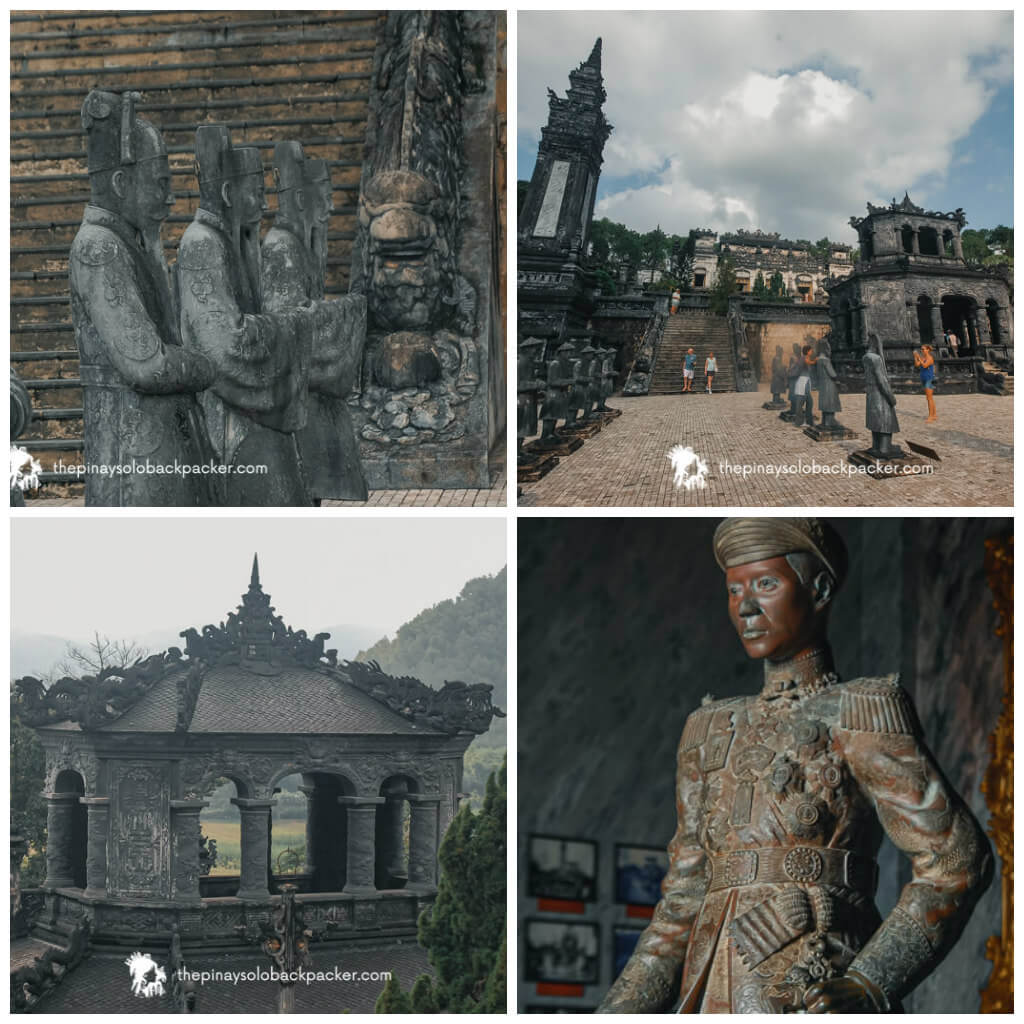
Situated on the slope of Chau Chu Mountain, the Royal Tomb of Khai Dinh is gray and is peppered with intricate designs. You need to climb the stairs decorated with dragons to reach the iron gate. Here, you’ll find the forecourt with the octagonal stele pavilion in the middle. This reinforced concrete-made structure commemorates the life and achievements of Emperor Khai Dinh. It also houses the imperial hagiography that was written by his successors. In front of the pavilion are 2 rows of honor guards ; a line-up of statue of bodyguards, horses, elephants, and Mandarins. Then, you need to climb a few more steps to reach the mausoleum – the grandiose Thienh Dinh Palace. The ceiling here is astonishingly painted with dragons flying amidst the clouds, and its walls are speckled with bits of glass and porcelains. But the main draw is here Emperor Khai Dinh’s intricately designed crypt, with a life-size bronze status of the sited Emperor Khai Dinh under a lavish ceramic-and-glass mosaic designed canopy.
The center rear of the palace reveals the piece de resistance: a life-size bronze statue of the enthroned Emperor Khai Dinh, sitting under a concrete canopy decorated with a ceramic-and-glass mosaic. The statue was cast in France in 1920; the canopy weighs over a ton, belying its lacy appearance.
The Royal Tomb of Khai Dinh tooks years to be completed. In fact, it was his son Bao Dai, the last reigning Nguyen Emperor who completed the structure, 6 years after the former emperor’s death. It is the last royal tomb constructed in Hue, Vietnam.
5.TOMB OF MINH MANG
Entrance Fee: (adult) 150,000 VND – ₱329 (SGD 9, MYR 27, AUD 10, USD 6)
(child, 7-12 y.o) 30,000 VND – ₱66 (SGD 2, MYR 5, AUD 2, USD 1.29)
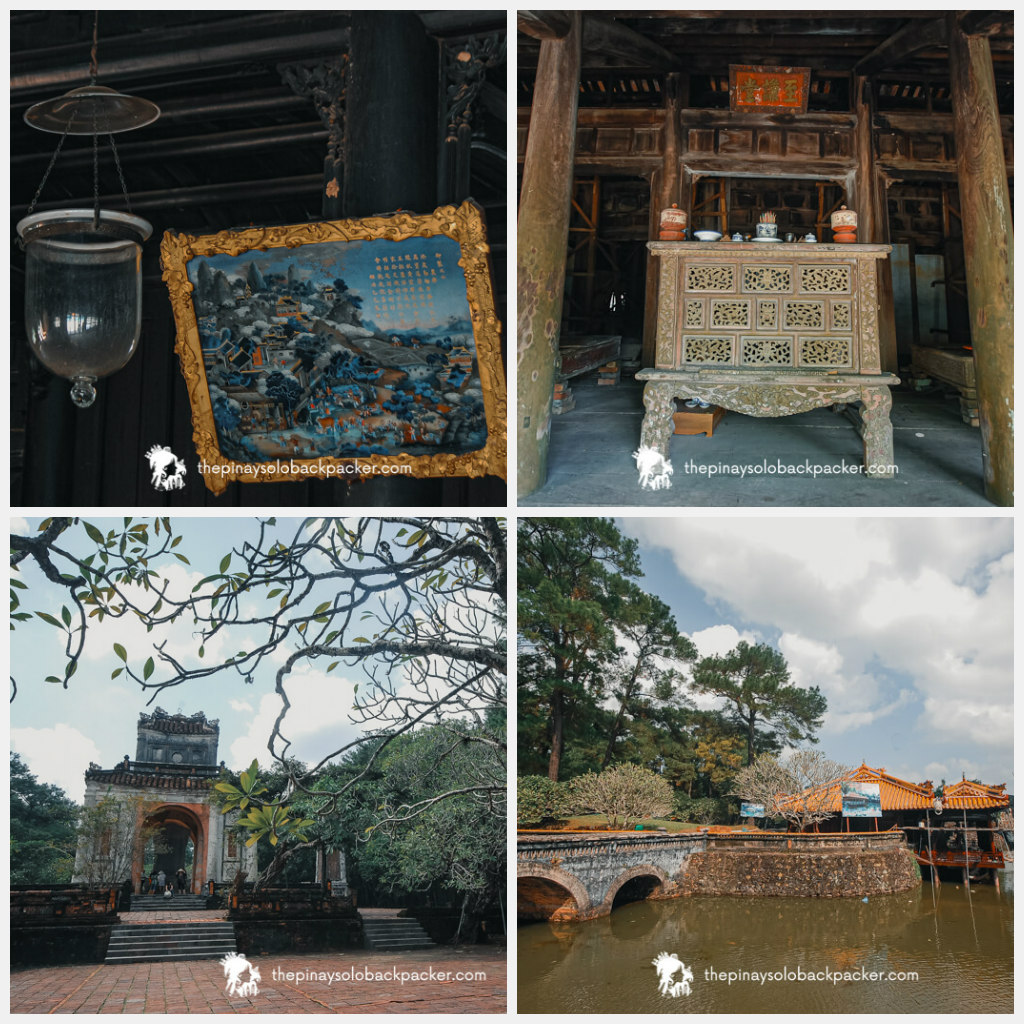
Minh Mang (Nguyen Phuc Dam) is the second emperor of the Nguyen Dynasty, the 4th son of Emperor Gia Long. He governed Vietnam from 1820 to 1840. He is known for his firm belief in Confucianism and his opposition to the French imperialist. But because Emperor Minh Mang supported cultural assimilation of non-Vietnamese ethnic group, this caused many uprisings. Emperor Minh Mang is said to have many wives and concubines, and have roughly 142 children from 43 wives.
The Tomb of Minh Mang is sitting on the west reservoir of the Perfume River in An Bang village, sheltered by pine trees and lagoons. There are palace and pavilions, sprinkled around the 40 acre walled property, arranged proportionally along a line running from Di Hong Gate to the foot of the wall behind the Emperor’s grave. The Tomb of Minh Mang was planned by the Emperor himself, but was completed by Thieu Tri, his successor.
6.THE JAPANESE BRIDGE: THANH TOAN BRIDGE
Entrance Fee: FREE
Parking Fee: FREE
Open Hours: 24/7

One of my favorite tourist spots in Hue is the ancient Thanh Toan Bridge. It is standing proudly on the rural village of Than Thuy in Huong Thuy district. This Japanese covered bridge closely resembles a modest house overlooking a canal and a scenic rice field. It is often dubbed as the sister bridge of the more famous Hoi An Bridge. The Than Toan Bridge is supported by massive stone pillars and its roof is ornately decorated with dragon, turtle, phoenix and unicorn. Inside the bridge is a small altar and 6 rest wooden partitions where locals usually sleep and rest.
Once you cross the bridge, you will find Thuy Thanh’s small museum that showcases rice harvesting tools and traditional games and clothes of the locals.
7.AO DAI SHOW
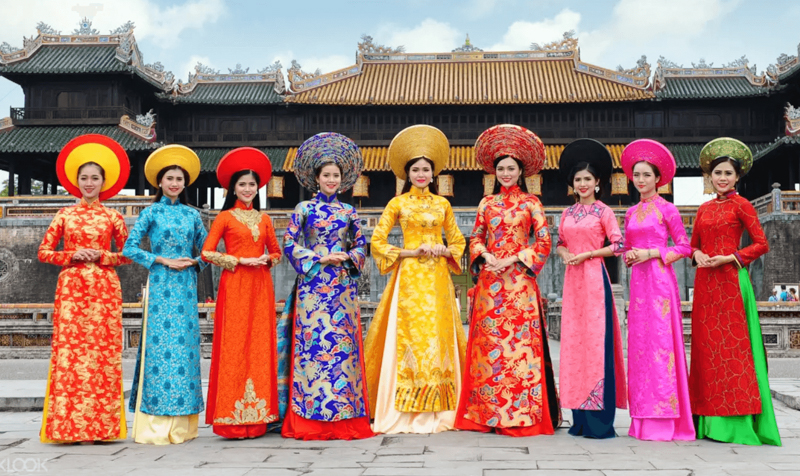
(photo provided by Klook)
One of the interesting things to do in Hue is watching the Ao Dai Show. Ao dai is Vietnamese traditional costumes worn in the past by Nguyen lords. Through this play, you can admire the rich heritage of Hue’s imperial court under the Nguyen era. You’ll get to see varied, colorful ao dai traditional garments and watch a Royal paper Fan dance, Lotus Dance, Cup Dance, and even Vietnamese Traditional Martial Arts. What’s also great about the Ao Dai Show is there’s an interaction, exchange and cultural sharing between the visitors and performers. Guests can also wear the traditional clothes and experience wearing the Emperor, the Queen, the Prince and Princess, etc garments. The script they use changes every month to showcase the colors and variety of Vietnamese culture.
Ao Dai Ticket: RESERVE HERE
8.TAM GIANG LAGOON
Tam Giang Lagoon is another famous tourist spot in Hue, one of the largest lagoons in Southeast Asia. The biggest rivers in Hue like the Perfume River, Bo River, and O Lau River all flow into the Tam Giang Lagoon. It’s quite a distance from Hue’s center but you can join organized group tours to reach this place. Sunset is the best time to visit, when the sky turns pinkish and tangerine and reflects on the calm water of the lagoon. By joining the group tours, you can also experience fishing with the locals using nets and drop by traditional Vietnamese village. You can also sample the fresh seafood such as clams, crabs, shrimps, etc. when you dine at one of the cottages here. Tam Giang Lagoon supports the livelihood of the locals who rely on its resources. The seafood caught daily in Tam Giang Lagoon are sold in local markets. Local handicrafts are also abundant in the area.
Tam Giang Lagoon Tour: RESERVE HERE
9.BACH MA NATIONAL PARK
Entrance Fee: (adult) 40,000 VND – ₱88 (SGD 2.40, MYR 7, AUD 3, USD 2)
(child, 7-12 y.o) 20,000 VND – ₱44 (SGD 1.20, MYR 4, AUD 1.32, USD 0.86)
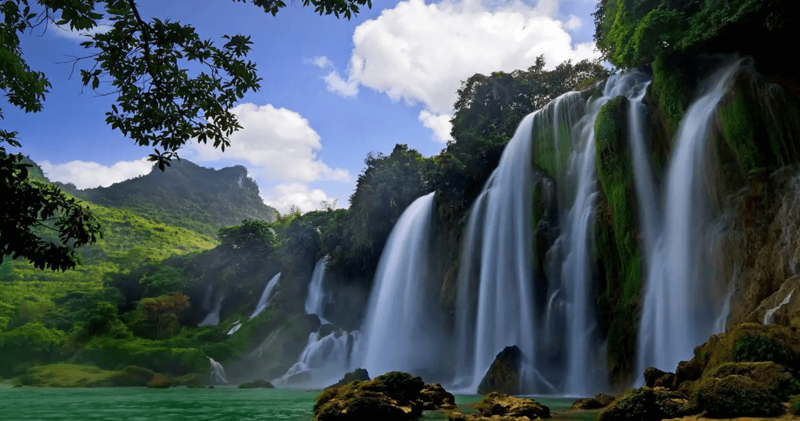
(photo by Klook)
There’s a scenic nature park that is accessible from downtown Hue – Bach Ma National Park, covering around 22,000 hectares of land. It’s a former hill station for the government officials during the French-era, which was chosen by Girard, a French engineer because of its cool climate. Several French-inspired villas and hotels were built here. But what really draw tourists here are the natural attractions such as the scenic Five Lakes and the Do Quyen Falls.
If you are adventurous enough, you can go trekking at Bach Ma National Park. You can visit the most popular tourist spots here including the Five Lakes and the Do Quyen Waterfalls. You can even swim or take a dip in one of the lakes and waterfalls.
The most convenient way to visit Bach Ma National Park from Hue center is by joining affordable, organized group tours. See link below.
Bach Ma National Park Tour: RESERVE HERE
10.PHONG NHA CAVE
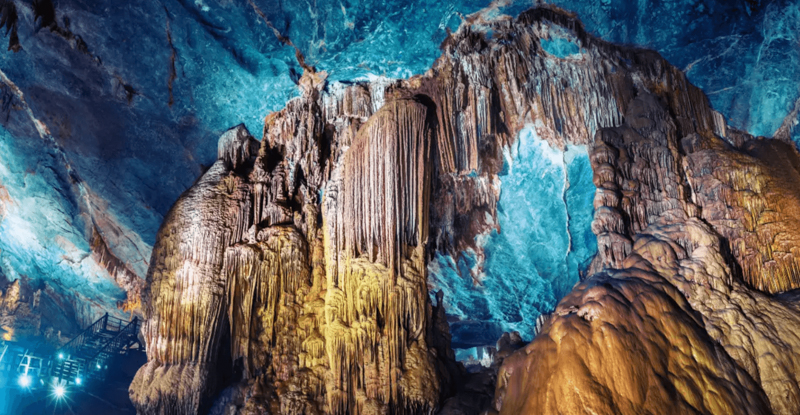
(photo provided by Klook)
Phong Nha Cave is part of the sprawling Phong Nha-Ke Bang National Park, a UNESCO World Heritage site in Quang Binh Province. This massive cave is home to one of the longest river caves in the world that is clad by stalactites and stalagmites. Despite measuring over 7,700 meters long, only the first 1,500 meters of Phong Nha Cave is open to tourists. This part contains several grottoes and chambers. Phong Nha Cave used to be inhabited by the Cham indigenous people as demonstrated by the ancient inscriptions on the walls of the caves, dating back to thousands of years ago.
To get to Phong Nha Cave, you can conveniently join group tours or book a private tour through the link below.
Phong Nha Cave Tour: RESERVE HERE
HUE SIDE TRIPS

DA NANG
Located midway between Hanoi and Ho Chi Minh City, Da Nang is another popular touristy destination in Vietnam. And it’s proximity to Hue and Hoi An makes it a perfect side trip, especially if you are looking for a good beach in Vietnam.
There are direct flights from Singapore and Malaysia to Da Nang International Airport, so if you want to explore Central Vietnam, you can fly here and then take a bus, train or rent a car to Hue or Hoi An. If coming from Hanoi or Ho Chi Minh City, there are cheap flights to Da Nang via Viet Jet and Jetstar, as well, it is sometimes cheaper than taking an overnight bus from the 2 major cities.
DA NANG SIGHT SEEING TOUR: RESERVE HERE
HOI AN
The charming town of Hoi An, originally inhabited by the Cham people in the olden days, is another destination when visiting Central Vietnam. It can be done as a side trip from Hue or before going to Hue. This colorful town is peppered with age-old shophouses converted into restaurants, cafes, boutiques, hotels, galleries, and tailor shops.
For a more detailed blog about Hoi An, check my Hoi An Travel Guide with Budget Itinerary through the link below.
ALSO READ: HOI AN BUDGET ITINERARY + TRAVEL GUIDE
HUE, VIETNAM ITINERARY
One day should be enough to explore the top tourist attractions in Hue like the Hue Citadel and the Royal Tombs. However, if you want to make a side trip to Phong Nha Cave or Bach Ma National Park, you can add additional 1-2 days on your Hue trip.
Here’s a sample 1-2 Day itinerary for Hue with sample budget. Feel free to modify it depending on your schedule, budget, and preferences.
Take note the sample Hue itinerary expenses below doesn’t include the hotel, drinks, souvenirs, and transportation between Hue and your place of origin.

| DAY 1 | HUE |
| Hue Full Day Tour: BOOK HERE (VND 936,254 – ₱ 2,240) | |
| Car Rental: BOOK HERE | |
| 07:30 AM | Start of tour. Meet up at Toa Kham Wharf |
| 08:30 AM | Royal Tomb of Minh Mang (VND 100K – ₱ 219/ FREE with Tour) |
| Royal Tomb of Khai Dinh (VND 100K – ₱219/ FREE with Tour) | |
| 10:30 AM | Traditional Martial Art Van An |
| 11:00 AM | Conical Hut Village + Incense Making Village. (FREE) |
| 12:00 PM | Lunch (Free with Tour) |
| 01:30 PM | Hue Citadel (VND 150K – ₱329/ FREE with Tour) |
| 03:00 PM | Thien Mu Pagoda (FREE) |
| 04:00 PM | Perfume River sightseeing boat tour (FREE with Tour) |
| 05:00 PM | End of tour. |
| 06:00 PM | Dinner (VND 228K – ₱500) |
| 07:30 PM | Ao Dai Show. RESERVE HERE (VND 314K – ₱687) |
| 09:30 PM | End of show. ETD Hotel. |
| 10:00 PM | Hotel. Lights out. |
| Day 1 Expenses | VND 1,250,482 – ₱3,427 (SGD 76, AUD 82, MYR 226, $54) |
| DAY 2 | Phong Na Cave |
| Phong Na Cave Tour: RESERVE HERE (VND 814K – ₱1,781) | |
| |
| 06:30 AM | Start of Phong Na Cave Tour (FREE with tour) |
| La Vang Church | |
| Ben Hai River | |
| Hien Luong Bridge | |
| Dox Mieu Base (DMZ of Vietnam) | |
| 12:00 PM | Lunch (FREE with tour) |
| Son River Cruise to Phong Nha Cave | |
| Phong Nha Cave (FREE with tour) | |
| 03:30 PM | Back to Hue |
| Snack at Quang Tri province | |
| 07:00 PM | ETD Hue hotel |
| 07:30 PM | Dinner (VND 228K – ₱500) |
| 08:30 PM | Back to hotel. Lights out. |
| Day 2 Expenses | VND 1,042,000 – ₱ 2,281 (SGD 63, AUD 68, MYR 189, $45) |
| DAY 3 | DEPARTURE |
| Head to Da Nang or Hoi An | |
| Hue to Da Nang or Hoi An: RESERVE HERE | |
| TOTAL EXPENSES | VND 2,292,482 – ₱ 5,708 (SGD 139, AUD 150, MYR 415, $99) |
If you still want to explore Hue on Day 3, you can try visiting Bach Ma National Park. RESERVE HERE
HUE, VIETNAM TRAVEL TIPS

- If you run out of Vietnamese Dong, you can try paying in USD, many tourist establishments accept USD as mode of payment.
- Bring a refillable water bottle to keep yourself hydrated during your Hue tour.
- Wear sunscreen if traveling during summer, to protect your skin from extreme sun. Bring foldable umbrella in case it gets too hot or if it rains heavily. Better to bring sun glasses and cap too. As I mentioned, Hue has erratic weather. So best to be prepared. If visiting during the rainy season or shoulder season, bring jacket and rain coat. Raincoats are widely available in the city too.
- Do not sit or touch artifacts.
- Wear appropriate attire when entering temples, avoid wearing shorts when visiting temples and sacred places.
- Don’t carry flammable materials.
- No smoking in palaces, historic buildings, temples, pine forest, and other flammable places.
